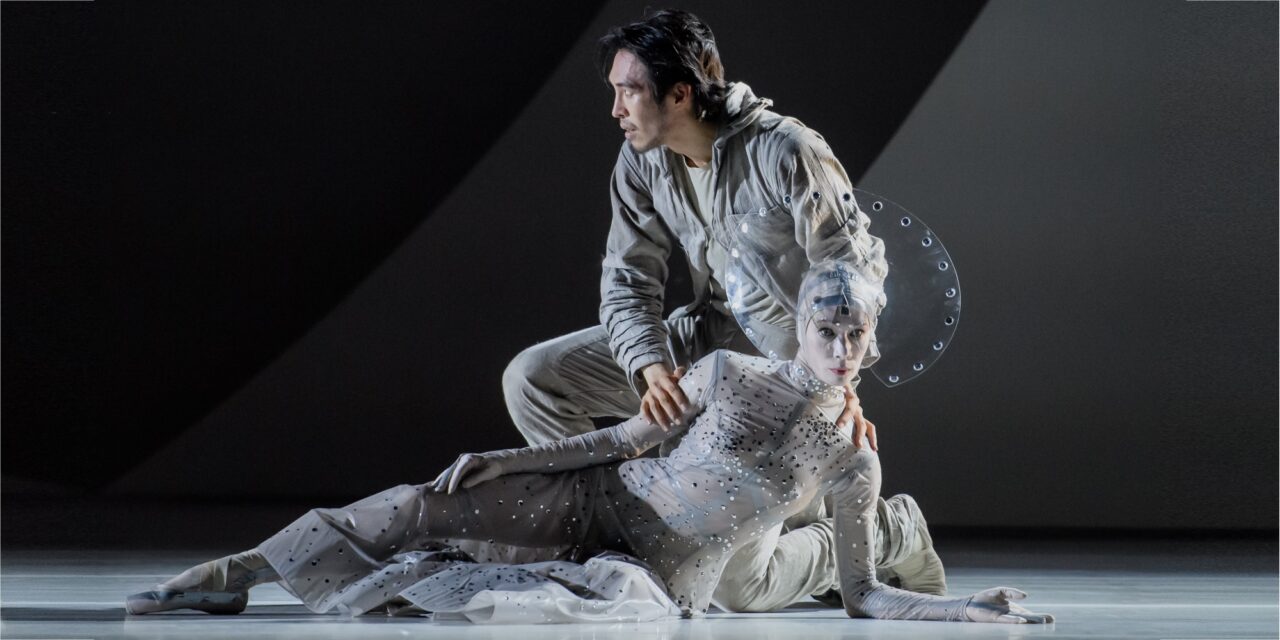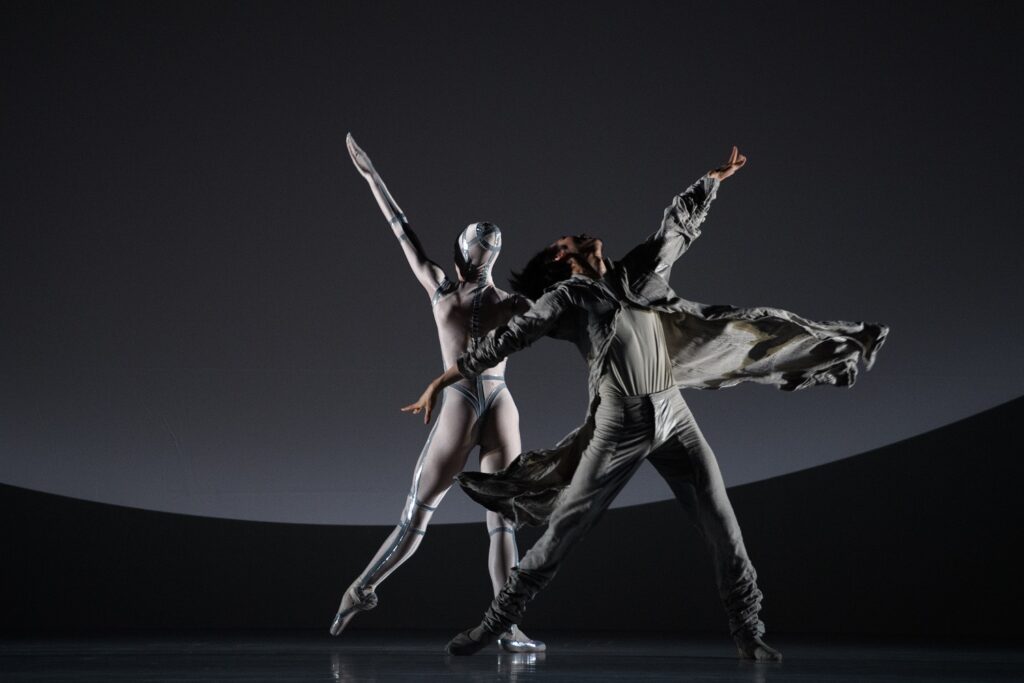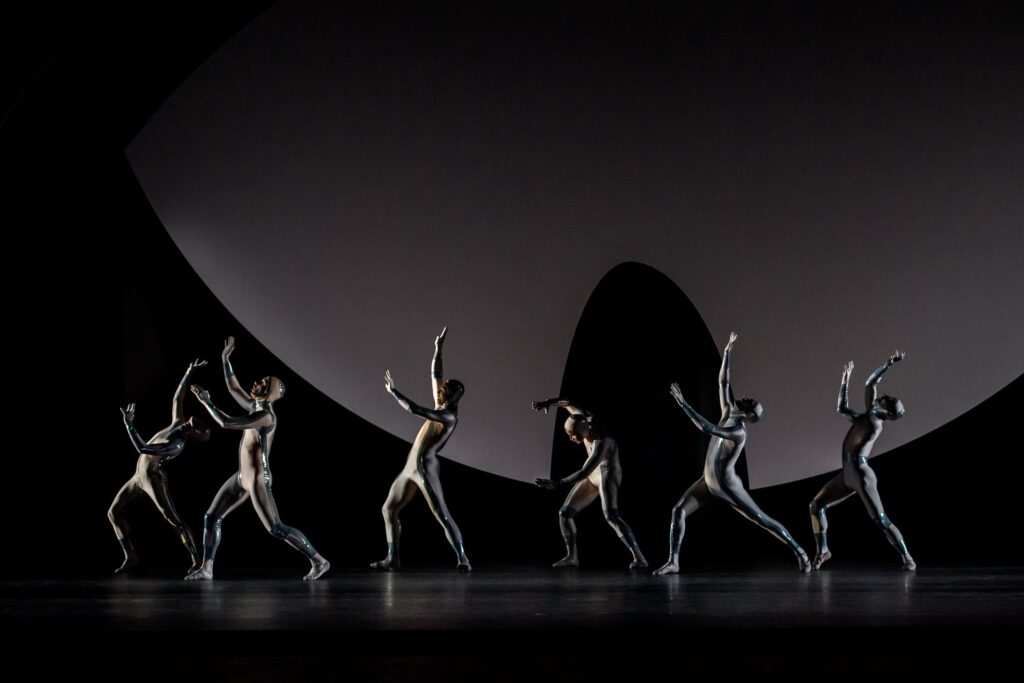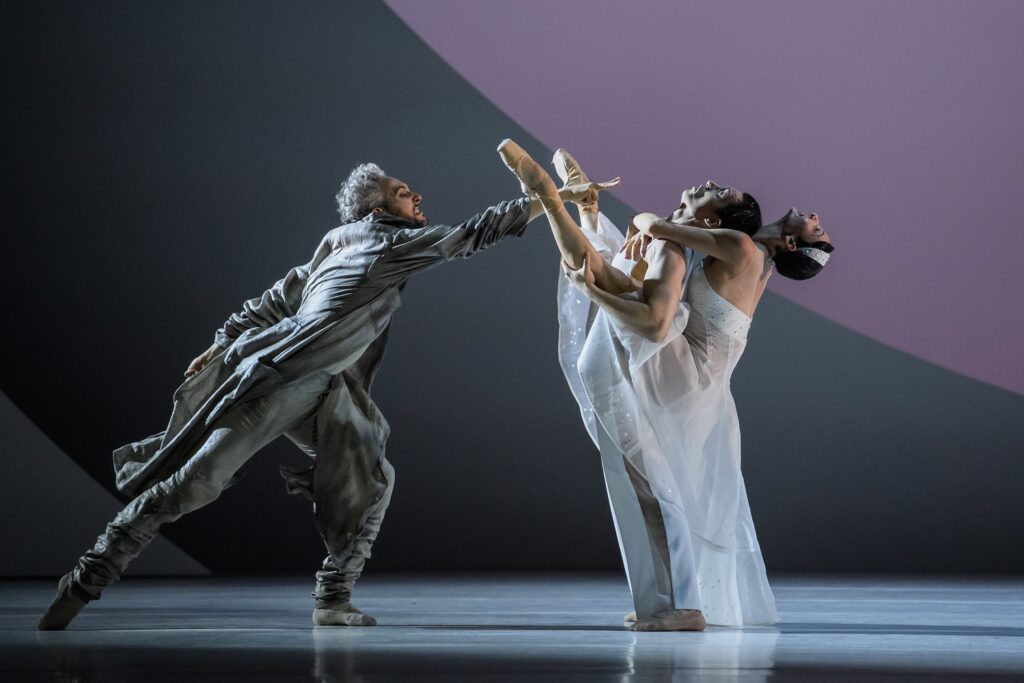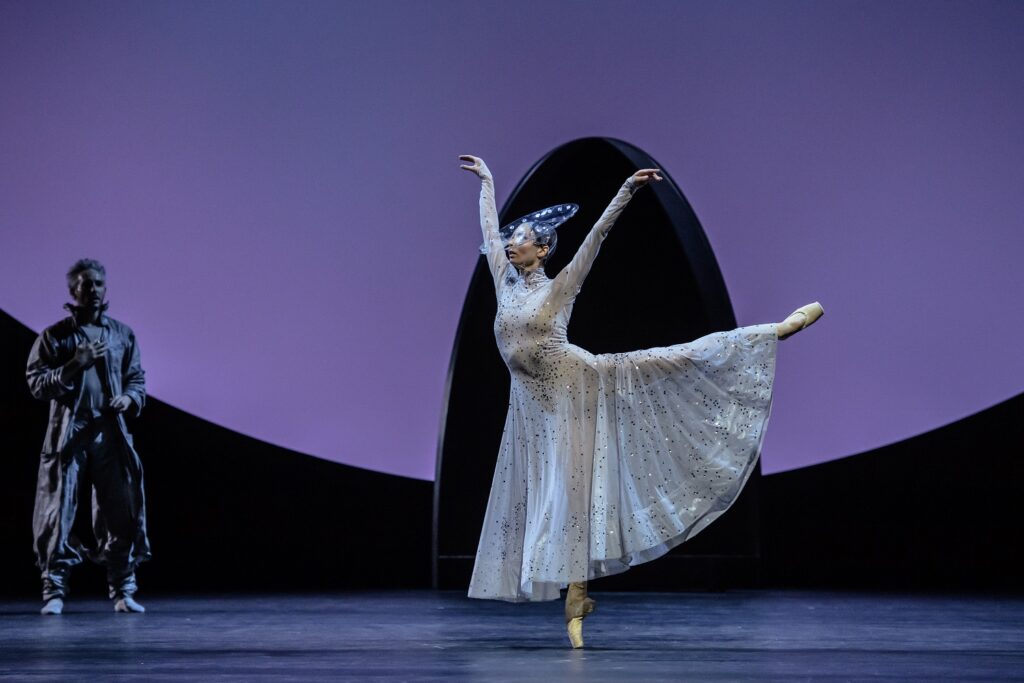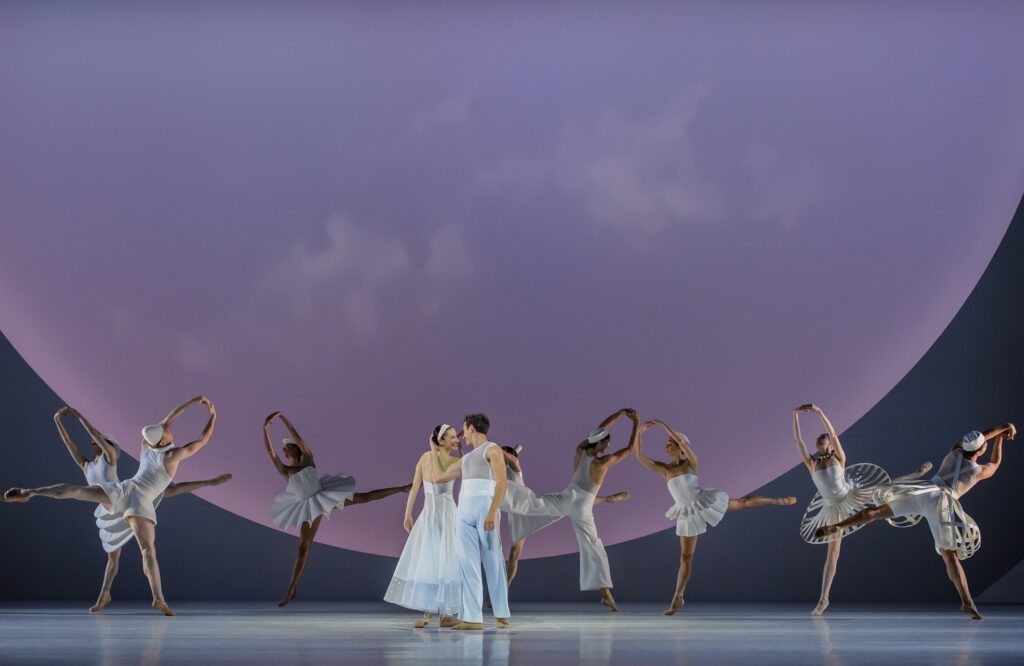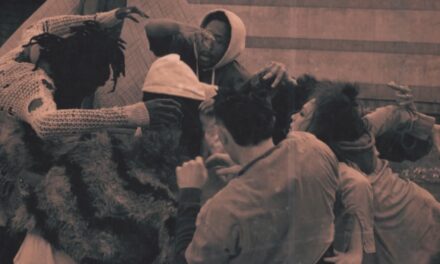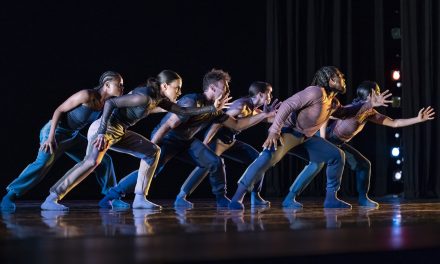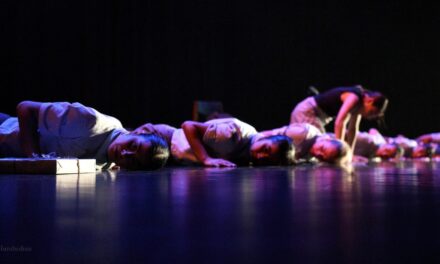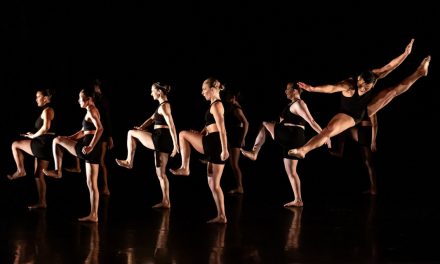On March 7-10, 2024, Southern California’s Segerstrom Center for the Arts welcomed Les Ballets de Monte-Carlo the esteemed National Company of Monaco. This in-demand company was established in 1985, by Princess Caroline of Hanover to honor her mother, Princess Grace, and the iconic Ballets Russes tradition. It now marks its fifth appearance at the Segerstrom since 2012 with its latest ballet from the company’s brilliant choreographer/director, Jean-Christophe Maillot. Coppél-i.A. is loosely based on the 1870 version of Coppélia, but with a twist. The masterful Maillot gets “contemporary” not only in name but in technique and story. Using the concept of Artificial Intelligence, he draws the audience into the physical and psychological intricacies of the tale and convinces the onlooker that the A-I creation has a mind of its own with actual feelings. At ballets-end, it has laid out a metaphor on women that is crafted with exquisite intelligence.
The seed of the idea came from Maillot in 2016. His classic training and experience marked his superb sense of theatre, story and movement. He admitted, “Although I was truly fascinated by the story of a young man falling in love with a mechanical doll, I was somewhat put off by the romanticism of the original ballet.” With that, he took off on his own fanciful journey in developing the concept based on a contemporary theme. And with the intelligence and pairing of the dramaturg Geoffroy Staquet and Maillot, they constructed an engaging version expertly woven with twists and turns that punctuate the passions and brilliance of this artful work.
The original music and arrangements by Bertrand Maillot, Jean-Christophe’s musically gifted brother, succeeded in deconstructing Leo Delibes’ lush and playful score of the original Coppélia with B. Maillot’s unique ability to integrate contemporary sounds with the traditional orchestration, making this an impressive tour de force.
The characterizations, beginning with the megalomania of Coppélius is played by the powerful Matej Urban in his wild hair, flying Frock coat, draped shirt and pants. Urban is magnificent and tortured as the Svengali; part wizard, part pitiful dreamer. His creation, Coppél-i.A, played by Lou Beyne is exquisite. In an attempt to gain control of both her body and her spirit, her twisted movements show her yearning to break free from her creator, leaving the audience in stunned silence.
The lithe and playful Swanhilda, (Anna Blackwell), with her long lyrical lines is a perfect ingenue to her handsome young suitor and fiancée, Frantz, (Simone Tribuna). Both are effortless dancer/actors with Frantz torn between human love and the alluring mysterious force. The Confident of Swanhilda, played by Lennart Radtke, is a tall powerful presence and guide for the young couple. La Mére (the Mother) played by Mimoza Koike at times appeared to pale in the presence of the other characters.
The see-thru culottes and crop tops in light wheat hues worn by Swanilda’s friends; Gaëlle Riou, Ekaterina Mamrenko, Lydia Wellington, Anissa Bruley, were a delightful counter to the amazing steely blues and silver of Coppél-i.A., Coppélius and his assistants; Lukas Simonetto, Christian Tworzyanski, Alessio Scognamiglio, Jaat Benoot. The tension of Coppélius “creation” works artfully against Swanhilda and Frantz’ playful lyricism.
The imaginative and fanciful moving orb-like “scenography” showing two different worlds with the first act placed outside in a forum, and the second act in Coppélius’ dark and menacing workshop were replete with black and silver pods. The costumes made up of whimsical tutus, head pieces, and light diaphanous costumes if various designs, were from the set and costume artist, Aimée Moreni’s palette. They were not only inventive, but beautiful. The costume designs revealed the bodies, showing an aesthetic ease of movement for the dancers. And the Lighting design by Samuel Thery and JC Maillot then added to the striking clarity of the characters and narrative.
The genius of Jean-Christophe Maillot, director/choreographer presented not only insights into a futuristic fantastical look at A-I and its possibilities, but also the innate human flaws of falling in love with one’s own fantasy.
After all is said and done, Les Ballets de Monte Carlo is among one of the finest ballet companies today, with its tradition, its leadership, excellent eclectic dancers and intelligent story telling. Kudos to the Segerstrom for having the insight and discernment to present such an incomparable group of artists. It is a must see.
For more information on Les Ballets de Monte Carlo, please visit their website.
For more information about The Segerstrom Center for the Arts, please visit their website.
Written by Joanne DiVito for LA Dance Chronicle.
Featured image: Les Ballets de Monte-Carlo in Coppél-i.A by Jean-Christophe Maillot – Photo by Alice Blangero.

